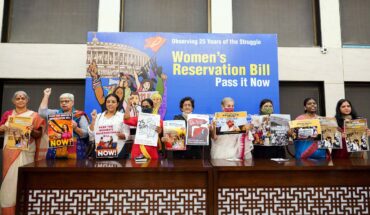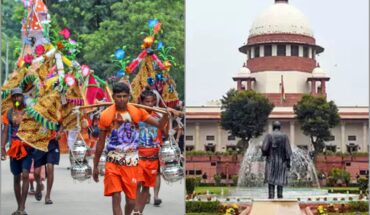Mohan Chandra Pargaien explains why green space is key to sustainable, resilient and inclusive cities
Urbanisation is an inevitable process of development that has the potential to provide privileged social and economic advantages, including better education, health, housing and employment opportunities. Though only half the world’s population lives in urban areas with the ability to generate 80% of the Global Gross Domestic Product (GDP), urbanisation has a good capacity and rich potential to improve well-being in societies. As the UN World Cities report highlights, we expect the present population of urban areas to increase from 55% to 68% by 2050. The urban population of Indian cities is projected to reach near 60% from 31% (2011) by 2050. By 2030, India will have seven megacities which will include Ahmedabad and Hyderabad apart from New Delhi, Mumbai, Kolkata, Chennai and Bengaluru.
Green spaces in cities and towns besides providing various ecosystem services and public health benefits also offer services of psychological relaxation, stress reduction, physical activities and reduction of climate-related vagaries such as pollution, heat waves, etc. One of the major reasons warranting the need for urban green spaces is the fact that apart from consuming a huge quantum of natural resources by our cities, almost 70% of all greenhouse emissions is generated from an urban built environment. The ever-increasing pace of urbanisation is going to make this condition worse in the years ahead. In a study by T. Endreny et. al (2017), trees in megacities may save nearly $500 million per year in services including environmental protection that make urban environments cleaner, more affordable and more pleasant places to live in. Urban green spaces have become essential for city planners and managers to mitigate negative environmental consequences and ensure a delicate balance between development and the environment.
A major reason that warrants the need for urban green space/s is the fact that apart from consuming a huge quantum of natural resources by our cities, almost 70% of all greenhouse emissions is generated from the urban built environment. The ever-increasing pace of urbanisation will make this condition even worse. There have been various international meetings, conferences and agreements to improve access to fair green space to achieve the objectives of sustainable urban policies. Ensuring environmental sustainability is one of the three interlinked principles of the New Urban Agenda adopted at the United Nations Conference on Housing and Sustainable Urban Development (Habitat III) in 2016. The importance of green space has also been highlighted in Self Development Goal 11 dealing with sustainable cities and communities to make cities and human settlements inclusive, safe, resilient and sustainable.
Happening Hyderabad
Green space and other nature-based solutions are an essential component for the development of sustainable, resilient and inclusive cities. The World Health Organization (WHO) has recommended per capita green space of nine square metres besides access to public green spaces within 300 m linear distance or a five-minute walk from the houses of urban residents. Though many western cities easily qualify when it comes to both these norms, the condition of Indian cities is quite inadequate. In terms of decadal change of forest cover in seven megacities, the FSI Report 2021 noticed an overall increase of 68 square kilometres in the last 10 years. All megacities witnessed poor decadal growth except for Hyderabad which has witnessed a maximum 147% increase in forest cover. Hyderabad is the only city that has seen decadal increase in per capita forest cover from 4.3 to 8.2 sq. met near the recommended green cover of 9 sq. met. The poor per capita forest cover in some cities needs corrective interventions for its improvement.
Telangana has accorded equal priority to improve green cover outside reserve forests under its flagship programme, ‘Telangana Ku Harithaaharam’. Out of nearly 109 urban parks identified, 53 parks are in operation to usher in climate resilience and provide much-needed ecosystem services besides improving green cover. Further, each gram panchayat of Telangana is developing nearly 19,000 mini-park-cum-forests (Prukriti Vanam); each mandal of the State is developing a Brihad Palle Prikriti Vanam (BPPV) spread over 10 acres each. The historic amendments to panchayat and municipal acts of Telangana and the recently created provision of a Green fund have provided a much-required boost to facilitate its commitments to improve green cover. The ongoing interventions of the Hyderabad Metropolitan Development Agency (HMDA) and the Greater Hyderabad Municipal Corporation (GHMC) such as Miyawaki, median planting, green walls, facade greenery, hanging gardens, rooftop garden terraces and urban wetlands with local adaptations need further scaling up to compensate for the rapid decline in green and blue features of urban jungles in the coming years.
Future green
Urbanisation is an inevitable and important component of development and is considered an integral driver of a modern economy. Being a leader among developing countries, Indian cities cannot become an exception to growing urban growth and development. To ensure a delicate balance between development and the environment, the activities aimed at a reduction in negative environmental externalities and their impact on natural resources and environmental services as an important aspect of green growth have become essential for city planners and managers.
Densification-prompted activities causing a rapid loss and fragmentation of both public and private green space are one of the major challenges influencing urban green space. Additionally, activities such as infill development and redevelopment of land coupled with the real estate boom and skyrocketing land values always force a citizen to go in for maximising economic benefits with little or no priority to green space. These factors along with the lack of necessary policy support, priority and funds make urban green space-related issues insignificant and inefficacious. A lack of concern among citizens and official laxity in the strict implementation of regulations related to the maintenance of green cover further worsen what is already a bad situation. A relook of these factors may help reorient our strategy of urban planning and management to accommodate the green vision and action.
The 3-30-300 rule of Cecil Konijnendijk (global urban forester, researcher, teacher, writer and speaker) stipulating the ability of everyone to see at least three trees from home, the presence of 30% canopy cover in each neighbourhood and a maximum distance of 300 m to the nearest park in a city needs adoption to the extent possible for a greener, better and more biophilic environs in our cities. Strict compliance of environmental obligations, including green space by user agencies, needs to be enforced without exceptions. Innovative concepts such as nature-based solutions, being 50% cheaper than grey alternatives and delivering 28% greater environmental benefits need to be incorporated in future urban planning. Together with multi-stakeholder involvement, adequate financial resources, and institutional support, this will strengthen urban governance to reorient our strategy of urban planning and management. In the end, this will ensure desired green cover in cities for our current generations as well as for the future.
Mohan Chandra Pargaien is Senior IFS officer, Hyderabad, Telangana. The views expressed are personal.



